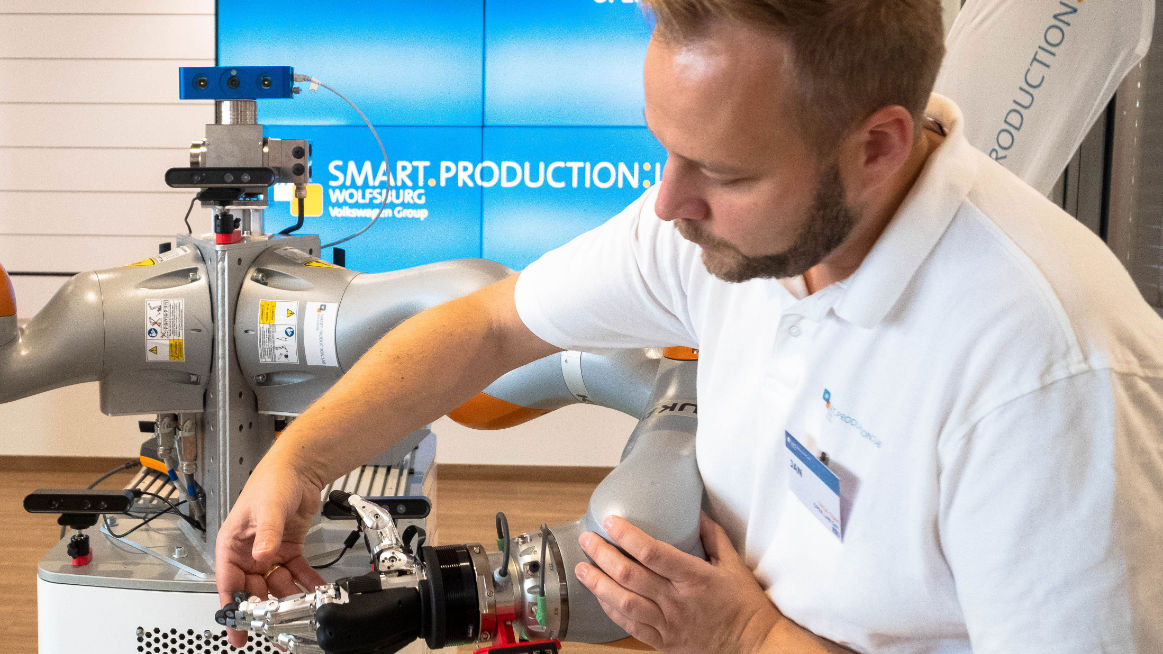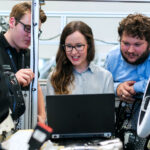The state of AI within the automotive industry
Automotive companies are marching to the low hum of the Fourth Industrial Revolution. This new chapter, marked by a drastic change in the way the world works, maximizes the use of robotics and AI.
As COVID-19 continues to challenge even the most robust economies worldwide, the situation set a stage for AI systems to demonstrate their capability. AI did not disappoint.
With any emerging innovation, watching it merge with existing processes is always exciting. Unsurprisingly, with no established method, carmakers are introducing the innovation from very different directions.
On this list, we handpicked innovations that show the many ways the industry is unlocking the potential of machine learning and AI.
Toyota
Toyota, by far the biggest-selling car maker from Japan, was lukewarm about robots and AI on factory floors. Amid reports of doubling efficiencies by competitors, the legendary Toyota Management System puts human ingenuity next to nothing. In 2018, they made waves by decommissioning robots and bringing back skilled, human workers. For then Head of Manufacturing and then EVP Mitsuru Kawai, “We always start with manual work.”
But their interest in AI did not vanish, it only refocused. In 2017, Toyota established Toyota Ventures AI, a venture capital firm dedicated to startups in machine learning and artificial intelligence. Through this Silicon Valley-based VC, they acquired technology bringing AI-powered quality assessment to factories. However, their focus is strongly on AI-powered driver assistance and self-driving automobile technologies.
Hyundai and Kia
Hyundai and Kia are sister car makers from South Korea, a country with the largest ratio of robots to humans. But recently, they have leveraged AI beyond manufacturing.
Kia Motors America has launched KIAN, a chatbot powered by artificial intelligence. With the ability to respond to queries and even schedule test drives, the NLP chatbot was a success. KIAN converts three times more customers than its website. The AI Parts blog has recently identified automotive sales as a strong opportunity in the automotive industry for AI.
Hyundai has also announced VEX, a wearable robot designed for its factory workers. Using AI and sensors for human movement, it enables an 80-kilogram man to lift a 3-kilogram tool like it’s nothing. Hyundai’s vision of the future factory is run by superhumans, or temporary cyborgs of sorts.
For drivers, Kia and Hyundai also developed the next generation AI-powered gearbox. Using map data, road conditions, weather, etc, it optimizes gear-shift when making turns so the car doesn’t have to wait for the brake pedals.
BMW
BMW is experimenting with AI in the realm of automotive design. They’ve had some early success, at least in generating buzz and excitement.
One of its latest concept cars, a futuristic vehicle with “skin” that stretches and adapts to wheel angle has gone viral. Using interlocking triangles which BMW calls “Alive Geometry” shows how future cars can change shape on the go. Remarkably, this design was built with artificial intelligence.
BMW design expert Holger Hampf says they are still exploring how AI can influence their product design. In his process, AI and neural networks build from data — parameters, conditions, specifications – to which designers must add beauty.
With AI, creative product designers become moderators where they are expected to distill, refine, and cultivate ideas by AI. It is certainly exciting to see what lies ahead for BMW with this design method.
VOLKSWAGEN
Volkswagen’s approach is a lot like Kia – enhance what is essentially human first.
“For us, the key question is, can we augment the human being by giving that person added artificial intelligence?”, CIO Martin Hofmann told Automotive World. This is easily demonstrated by the use of collaborative robots or “cobots” on their production floor. In the future, robots can take over more undesirable tasks. Volkswagen calls this the Self-Learning Factory.
The uniqueness of Volkswagen’s approach is in how human-centric it is at every level. It’s vision: build robots anyone can train. Using AI, these robots should be easy to configure. With machine learning, they will also learn to improve their function or “get better at their job”. So for example, a factory worker can teach the robot to lift one week, hold a drill in the next, etc. This approach maximizes the adaptability of the robot.
Volkswagen subsidiary Porsche is more ambitious. The brand has released a manual for company execs on how to be a top-down AI-driven business. The luxury car brand uses AI and machine learning to test its self-driving and assistive driving technologies. The Porsche Engineering Virtual ADAS Testing Center (PEVATeC) also generates millions of real-life driving scenarios to test new technologies faster and for cheap.
FERRARI
Trust Ferrari to integrate performance with technology, including AI. At CES two years ago, Intel has announced its partnership with Ferrari North America. Through cameras mounted on drones, the tradition of racetracks meets artificial intelligence.
Intel’s system will capture images and a neural network will process these images at lightning speed. This provides drivers, racing teams, and fans valuable data in realtime.
Built for Each Other
From car building right down to the racetracks, it’s hard to believe AI and the automotive industry weren’t built for each other. At AI Parts, unlocking the potential of artificial intelligence and machine learning is our goal. Just like these trailblazing companies, we believe in the potential of putting two great things together.





